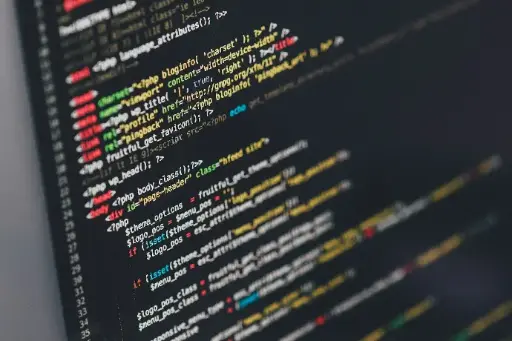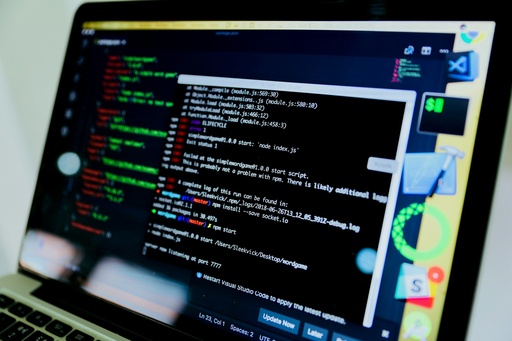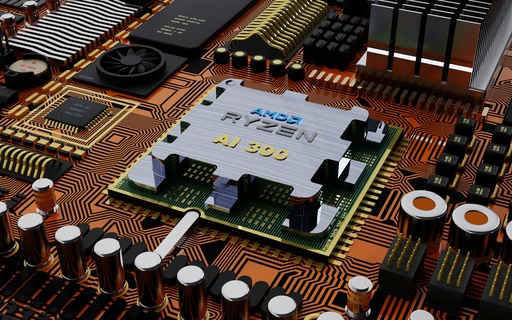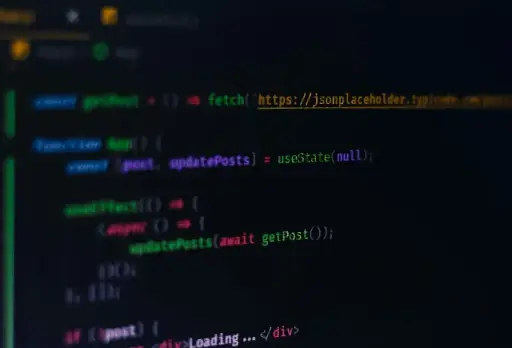All Courses

Real-Time Interaction: Participate in live discussions, ask questions, and receive instant feedback from instructors.
Expert Instruction: Learn from experienced educators and industry professionals in various fields.
Collaborative Learning: Engage with peers through interactive exercises, group activities, and discussions.
Flexible Scheduling: Choose from a range of class times to fit your schedule and learning preferences.
Enhanced Learning Experience: Benefit from multimedia presentations, live demonstrations, and real-world examples.

Module Highlights:
- Introduction to R: Get started with R programming, covering installation, basic syntax, and data structures.
- Data Manipulation: Learn how to clean, transform, and manage data using R packages like dplyr and tidyr.
- Exploratory Data Analysis: Use R to perform descriptive statistics and visualize data with ggplot2, uncovering insights and patterns.
- Statistical Analysis: Apply statistical techniques and hypothesis testing to analyze data and draw meaningful conclusions.
- Data Visualization: Create compelling and informative charts, graphs, and interactive visualizations to communicate your findings effectively.
- Advanced Topics: Explore advanced techniques, including time series analysis and machine learning, to enhance your analytical capabilities.

Module Highlights:
- Introduction to IoT: Understand the core concepts of IoT, including its architecture, key components, and applications across various industries.
- Sensors and Actuators: Learn about the different types of sensors and actuators, and how they interact with IoT devices to collect and respond to data.
- Connectivity & Communication: Explore the various communication protocols and networking technologies that enable IoT devices to connect and exchange data.
- Data Management & Cloud Integration: Gain skills in managing IoT data, utilizing cloud services for storage, processing, and analysis.
- Security & Privacy: Address critical issues related to IoT security and privacy, and learn strategies to protect data and devices from potential threats.
- Advanced Topics & Project Development: Delve into advanced IoT topics such as edge computing and machine learning, and apply your knowledge to hands-on projects that simulate real-world IoT scenarios.

Module Highlights:
- Introduction to Back-End Development: Understand the role of back-end development in web applications and explore core concepts such as server-side programming and database management.
- Server-Side Languages: Learn to use popular server-side languages like Node.js, Python (Django/Flask), or Ruby on Rails to handle requests, process data, and integrate with front-end systems.
- Database Management: Gain proficiency in working with relational databases (e.g., SQL) and NoSQL databases (e.g., MongoDB), including design, queries, and optimization.
- APIs and Web Services: Develop skills in designing and implementing RESTful APIs and integrating third-party services to enable communication between different parts of your application.
- Authentication & Security: Learn best practices for securing your applications, including user authentication, authorization, and protection against common vulnerabilities.
- Deployment & Scaling: Discover techniques for deploying web applications to cloud platforms, managing server environments, and scaling applications to handle increased traffic.

Module Highlights:
- Introduction to Web Development: Understand the full web development lifecycle, including project planning, design principles, and the roles of front-end and back-end technologies.
- Front-End Development: Master HTML, CSS, and JavaScript, and learn to create responsive, user-friendly interfaces using modern frameworks like React or Angular.
- Back-End Development: Gain expertise in server-side programming with languages such as Node.js, Python (Django/Flask), or Ruby on Rails, and learn to manage databases with SQL and NoSQL technologies.
- APIs and Web Services: Develop and consume RESTful APIs and integrate third-party services to enhance functionality and connectivity.
- Authentication & Security: Implement user authentication, authorization, and best practices for securing web applications against vulnerabilities.
- Deployment & DevOps: Learn to deploy applications to cloud platforms, manage server environments, and implement continuous integration/continuous deployment (CI/CD) pipelines.
- Project-Based Learning: Apply your skills to real-world projects that simulate end-to-end development, from initial design to deployment and maintenance.

Foundations of Entrepreneurship: Explore the key principles of entrepreneurship, including the mindset, characteristics, and strategies of successful entrepreneurs.
Idea Generation & Validation: Learn techniques for brainstorming and validating business ideas, assessing market needs, and refining your value proposition.
Business Planning & Strategy: Develop a comprehensive business plan, including market analysis, competitive positioning, and strategic planning to guide your startup.
Financial Management: Gain insights into financial planning, budgeting, fundraising, and managing cash flow to ensure your business's financial health.
Marketing & Sales: Discover effective marketing strategies, branding, and sales techniques to attract and retain customers and drive growth.
Legal & Operational Considerations: Understand the legal aspects of starting and running a business, including intellectual property, contracts, and regulatory requirements.
Scaling & Growth: Learn strategies for scaling your business, managing growth, and adapting to market changes.

Java Fundamentals: Start with the basics of Java programming, including syntax, data types, operators, and control structures.
Object-Oriented Programming: Dive into object-oriented principles such as classes, inheritance, polymorphism, and encapsulation to write reusable and modular code.
Exception Handling & File I/O: Learn to handle errors gracefully and work with file input and output for effective data management.
Advanced Java Features: Explore advanced topics such as generics, collections, streams, and multi-threading to build efficient and robust applications.
Java GUI Development: Develop graphical user interfaces using JavaFX or Swing, and create interactive applications.
Frameworks & Libraries: Gain hands-on experience with popular Java frameworks and libraries, such as Spring and Hibernate, to streamline development and manage data.
Project-Based Learning: Apply your skills to real-world projects, from creating simple applications to developing complex systems, integrating your knowledge in practical scenarios.

Introduction to React: Get started with the fundamentals of React, including JSX syntax, components, props, and state management.
Component Lifecycle & Hooks: Explore React component lifecycle methods and hooks like useState, useEffect, and custom hooks to manage state and side effects.
Advanced State Management: Learn advanced state management techniques using Context API, Redux, or other state management libraries to handle complex application state.
Routing & Navigation: Implement client-side routing and navigation with React Router to create multi-page applications and manage URL routes.
Performance Optimization: Discover best practices for optimizing React performance, including memoization, code splitting, and lazy loading.
Integration with APIs: Learn how to integrate React applications with RESTful APIs or GraphQL for dynamic data fetching and interaction.
Testing & Debugging: Gain skills in testing React components using tools like Jest and React Testing Library, and learn debugging techniques to ensure application reliability.
Project-Based Learning: Apply your knowledge through hands-on projects, building real-world applications and implementing advanced features to solidify your learning.

This course provides a comprehensive introduction to the fundamental concepts of computer science. Students will learn the basics of algorithmic thinking, programming, data structures, and computational theory. The course covers key topics such as problem-solving strategies, software development, and the ethical implications of technology. Through hands-on programming exercises, students will gain practical experience in writing, testing, and debugging code. By the end of the course, students will have a solid foundation in computer science principles and be prepared for more advanced study in the field. No prior programming experience is required.

This course explores the essential concepts of data structures and algorithms, which are foundational to efficient software development and problem-solving in computer science. Students will learn about various data structures such as arrays, linked lists, stacks, queues, trees, graphs, and hash tables. The course will also cover algorithms for searching, sorting, and manipulating data, with an emphasis on understanding their time and space complexities. Through practical coding exercises and projects, students will gain hands-on experience in implementing and analyzing these data structures and algorithms. By the end of the course, students will be equipped with the skills to design efficient solutions to complex computational problems. A solid understanding of basic programming principles is recommended.

This course provides an in-depth introduction to data science using Python, a powerful programming language widely used in the field. Students will learn how to acquire, clean, analyze, and visualize data to derive meaningful insights. Key topics include Python programming basics, data manipulation with libraries like Pandas and NumPy, data visualization with Matplotlib and Seaborn, and an introduction to machine learning with Scikit-Learn. The course emphasizes hands-on practice through real-world datasets and projects, enabling students to apply data science techniques to solve practical problems. By the end of the course, students will have a solid foundation in data science and be able to utilize Python to analyze and interpret complex data sets. Prior experience with basic programming concepts is recommended.

This course provides a comprehensive introduction to machine learning, covering both theoretical foundations and practical applications. Students will learn about various machine learning models, including supervised and unsupervised learning techniques such as linear regression, decision trees, support vector machines, clustering, and neural networks. The course also explores key concepts like model evaluation, overfitting, regularization, and hyperparameter tuning. Through hands-on projects and coding exercises, students will gain experience in implementing machine learning algorithms using popular frameworks and libraries such as TensorFlow, Keras, and Scikit-Learn. By the end of the course, students will be equipped with the skills to develop and deploy machine learning models to solve real-world problems. A strong foundation in programming and basic statistics is recommended.

This course offers a comprehensive introduction to data analytics and visualization, focusing on techniques for extracting meaningful insights from data and presenting them effectively. Students will learn how to collect, clean, and analyze data using various tools and methods, including descriptive statistics, exploratory data analysis, and advanced analytics techniques. The course emphasizes visual storytelling through data visualization tools like Tableau, Power BI, and Python libraries such as Matplotlib and Seaborn. Students will also explore best practices for designing clear, impactful visualizations that effectively communicate data-driven insights to different audiences. By the end of the course, students will be adept at transforming complex datasets into compelling visual narratives, enabling data-driven decision-making. Prior experience with basic data analysis and statistics is recommended.
?unique=b9d00a7)
This course provides an in-depth exploration of Natural Language Processing (NLP), a field at the intersection of computer science, linguistics, and artificial intelligence that focuses on the interaction between computers and human languages. Students will learn the fundamental concepts and techniques used to process and analyze text data, including tokenization, stemming, lemmatization, and syntactic parsing. The course covers key NLP applications such as sentiment analysis, machine translation, text classification, and named entity recognition. Students will also explore advanced topics like word embeddings, sequence models, and transformer architectures, with hands-on experience using popular NLP libraries such as NLTK, SpaCy, and Hugging Face’s Transformers. By the end of the course, students will be equipped to build and deploy NLP models to tackle real-world language processing challenges. A background in machine learning and Python programming is recommended.

This course provides a foundational understanding of cybersecurity, focusing on protecting systems, networks, and data from digital attacks. Students will learn the core principles of cybersecurity, including threat identification, risk management, and defense strategies. Key topics include cryptography, network security, ethical hacking, and incident response. The course also covers current cybersecurity threats such as malware, phishing, ransomware, and social engineering. Through hands-on labs and exercises, students will gain practical experience in securing systems and responding to cyber threats. By the end of the course, students will understand the importance of cybersecurity in today’s digital landscape and be prepared to apply basic security measures in various contexts. No prior experience in cybersecurity is required, but a basic understanding of computer systems is recommended.

This course provides a comprehensive introduction to ethical hacking and penetration testing, focusing on the techniques used by security professionals to identify and address vulnerabilities in computer systems and networks. Students will learn the principles of ethical hacking and the legal and ethical implications of conducting penetration tests. Key topics include reconnaissance, scanning, exploitation, privilege escalation, and post-exploitation techniques. The course also covers various tools and frameworks, such as Metasploit, Nmap, Wireshark, and Burp Suite, used in the penetration testing process. Through hands-on labs and real-world scenarios, students will gain practical experience in simulating cyberattacks to test and improve security defenses. By the end of the course, students will be equipped with the skills to conduct ethical hacking and penetration testing in a professional and responsible manner. A basic understanding of networking and cybersecurity concepts is recommended.

This course provides an in-depth examination of network security and cryptography, focusing on protecting information and ensuring secure communication over networks. Students will explore fundamental concepts of network security, including threat detection, firewall configurations, intrusion detection systems, and secure network design. The course also covers essential cryptographic techniques, such as encryption algorithms (symmetric and asymmetric), hashing, digital signatures, and key management. Students will learn how to implement cryptographic protocols and apply security measures to safeguard data integrity, confidentiality, and authentication. Through practical labs and case studies, students will gain hands-on experience in configuring secure networks and applying cryptographic techniques to real-world scenarios. By the end of the course, students will have a solid understanding of both network security practices and cryptographic methods essential for securing modern information systems. A foundational knowledge of networking and basic security principles is recommended.

This course offers a comprehensive overview of cloud computing, exploring its fundamental concepts, services, and deployment models. Students will learn about the core principles of cloud computing, including scalability, elasticity, and on-demand resource allocation. The course covers key cloud service models such as Infrastructure as a Service (IaaS), Platform as a Service (PaaS), and Software as a Service (SaaS), along with major cloud providers like Amazon Web Services (AWS), Microsoft Azure, and Google Cloud Platform (GCP). Students will gain practical experience with cloud-based solutions, including setting up virtual machines, managing storage, and deploying applications in the cloud. The course also addresses considerations for cloud security, cost management, and compliance. By the end of the course, students will have a solid understanding of cloud computing concepts and be prepared to leverage cloud technologies for various business and technical needs. No prior cloud computing experience is required.

This course provides a practical guide to developing augmented reality (AR) applications using ARKit for iOS and ARCore for Android. Students will learn the fundamentals of AR development, including setting up development environments, understanding spatial tracking, and creating interactive AR experiences. The course covers essential topics such as scene understanding, object detection, spatial mapping, and integrating virtual objects with the real world. Students will gain hands-on experience through projects that involve building AR applications, implementing features like image recognition, surface detection, and gesture controls. By the end of the course, students will be proficient in using ARKit or ARCore to develop and deploy AR applications, with a solid understanding of the principles and practices of AR development. Prior experience with mobile app development and basic programming concepts is recommended.

This course offers a foundational exploration of quantum computing, focusing on the principles, theories, and applications of this emerging technology. Students will learn about quantum mechanics concepts such as superposition, entanglement, and quantum gates, and how these principles underpin quantum computing. The course covers the basics of quantum algorithms, including Shor's algorithm for factoring and Grover's algorithm for search problems, and introduces quantum programming languages and frameworks like Qiskit and Cirq. Students will gain hands-on experience with quantum simulators and real quantum computers through practical exercises and projects. The course also discusses the current state of quantum computing research, its potential impact on various fields, and the challenges facing the technology. By the end of the course, students will have a solid understanding of quantum computing fundamentals and be prepared to explore more advanced topics in the field. No prior experience in quantum mechanics or computing is required, but a basic understanding of linear algebra and programming concepts is recommended.

This course delves into the development and implementation of quantum algorithms, focusing on how they leverage the principles of quantum computing to solve complex problems more efficiently than classical algorithms. Students will explore a range of quantum algorithms, including Shor's algorithm for integer factorization, Grover's algorithm for unstructured search, and the Quantum Fourier Transform. The course also covers advanced topics such as quantum error correction, quantum simulations, and optimization problems.

This course provides a comprehensive introduction to the field of robotics, covering the fundamental concepts, technologies, and applications that define modern robotic systems. Students will learn about the core components of robots, including sensors, actuators, and control systems. Key topics include robot kinematics, dynamics, path planning, and control algorithms. The course also explores different types of robots, such as industrial robots, mobile robots, and humanoid robots, and their various applications in manufacturing, healthcare, and exploration.